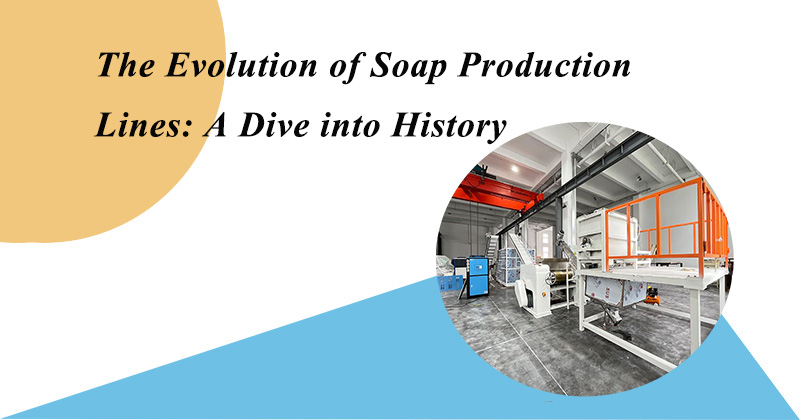The story of soap production lines is a fascinating journey that mirrors the broader arc of human civilization, technological innovation, and changing consumer demands.
Early Beginnings: Manual and Small – Scale Production
Soap – making has ancient roots, dating back thousands of years. In ancient Babylon, around 2800 BC, evidence shows that people combined fats with ashes to create a primitive form of soap. These early efforts were entirely manual. Individuals, often in their homes or small workshops, would carefully measure out ingredients, typically animal fats and plant ashes rich in lye. They would then mix these components in large pots over open fires, stirring the thickening mixture by hand for hours. This labor – intensive process yielded small batches of soap, primarily used for cleaning textiles and, to a lesser extent, personal hygiene.
During the Middle Ages in Europe, soap – making became more organized. Guilds emerged, setting standards for soap quality. Craftsmen worked in small, specialized workshops. The production process still relied heavily on manual labor, with workers using basic tools like wooden paddles for stirring and simple molds for shaping the soap. These soaps were often coarse, with a strong, utilitarian nature, and were mainly available to the upper classes due to their relatively high cost.
Industrial Revolution: The Birth of Mechanized Production
The 18th – 19th century Industrial Revolution was a game – changer for soap production. The invention of machinery transformed the industry from a small – scale, manual – based operation into a mass – production powerhouse. In 1791, Nicolas Leblanc patented a process to produce soda ash (sodium carbonate) from common salt, which was a crucial ingredient in soap – making. This discovery, along with the development of steam – powered machinery, enabled the first steps towards mechanized soap production.
Factories began to spring up, equipped with large kettles for boiling fats and alkalis, powered by steam engines. Mechanical stirrers replaced manual paddles, significantly reducing the time and effort required to mix ingredients. The introduction of continuous – process kettles in the 19th century further revolutionized production. These kettles allowed for a more efficient, uninterrupted flow of ingredients, increasing output substantially.
As a result, soap became more affordable and accessible to the general public. This led to a surge in demand, which in turn drove further innovation in production techniques.
20th Century: Automation and Refinement
The 20th century witnessed an explosion of automation in soap production lines. In the early 1900s, the development of the triple – roll mill refined the soap – making process. This machine could finely grind and blend soap ingredients, resulting in a smoother, more consistent product.
Later, with the advent of electrical motors and sophisticated control systems, soap production lines became highly automated. Ingredients were precisely measured and dispensed by automated systems, ensuring consistent quality. Automated molding machines could produce large numbers of identically shaped soap bars in a short time. Packaging also became a more streamlined process, with machines capable of wrapping, labeling, and boxing soaps at high speeds.
Moreover, research into chemistry led to the development of synthetic detergents in the mid – 20th century. This new type of cleaning agent, which could be produced more cheaply and had better cleaning properties in hard water, was quickly integrated into the production line. Soap manufacturers adapted their production processes to incorporate these new synthetic ingredients, further expanding their product offerings.
Modern Era: Sustainability and High – Tech Integration
In the 21st century, the focus of soap production lines has shifted towards sustainability and advanced technology. With growing environmental concerns, manufacturers are increasingly using renewable raw materials such as palm oil from sustainable sources, and plant – based surfactants.
Advanced technologies like computer – controlled manufacturing systems have made production lines more efficient than ever. These systems can monitor and adjust every aspect of the production process in real – time, from ingredient mixing to packaging. 3D printing has also started to make inroads in the industry, allowing for customized soap production, where consumers can order soaps with unique shapes, scents, and ingredients.
The history of soap production lines is a story of continuous evolution. From humble beginnings of manual labor to today’s high – tech, sustainable production methods, it has come a long way, always adapting to new technologies, consumer needs, and environmental imperatives.

